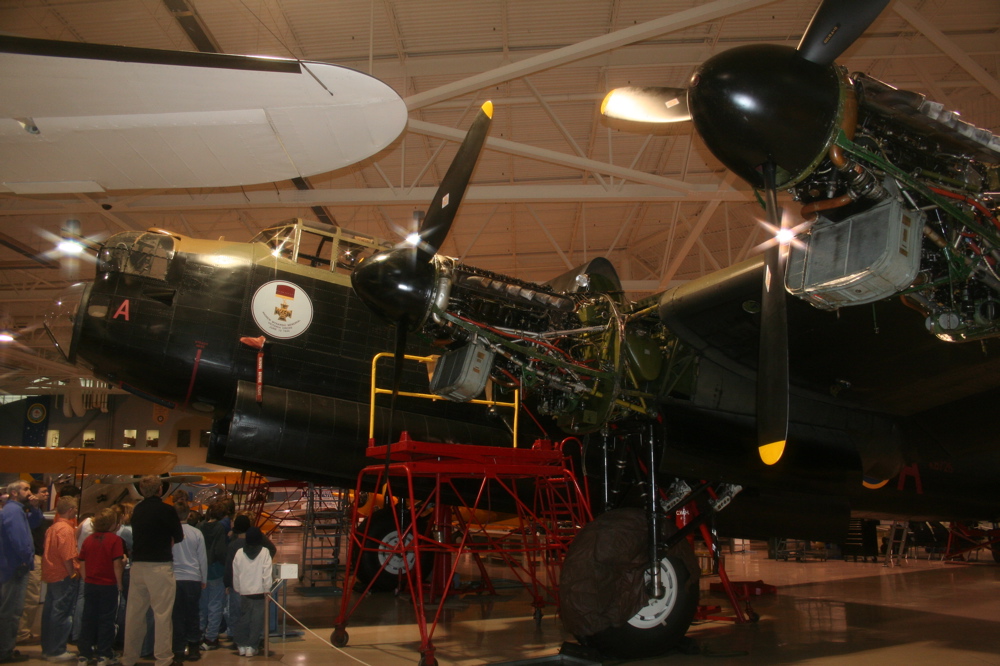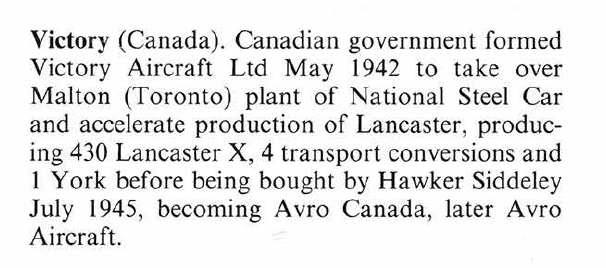Some of the projects Victory Aircraft worked on came as a result of the deliberations of an interdepartmental committee on air transport policy / committee on post-war aircraft manufacturing, in 1943.
A sub-committee recommended the development of a fast, powerful and, if possible, pressurised four-engine long-range transport for the Royal Canadian Air Force (RCAF), Trans-Canada Air Lines (TCA) and Canadian Pacific Airlines, a subsidiary of a Canadian transport giant, Canadian Pacific Railway. Thanks to the support of Ralph Pickard Bell, director general of aeronautical production at the Department of Munitions and Supply, Victory Aircraft was awarded the contract to develop this aircraft, the Victory 4.
Realising the importance of having an experienced project manager, the Department of Munitions and Supply asked A.V. Roe, whose Lancaster bomber was being produced by Victory Aircraft, to release one of its best engineers. The British aircraft maker politely refused, citing the importance of its own projects. Bell was both surprised and disappointed. Victory Aircraft thus began designing the new airliner using its own resources. An Australian air carrier, Australian National Airways, was quick to take an interest in the Canadian airliner project. Some even proposed that the development of this aircraft become a binational project. Concerned above all with the survival of the Canadian aircraft industry, Bell politely refused to go down this path.
Even before the end of the summer of 1943, however, the interdepartmental committee questioned the need to develop a Canadian long-range airliner. The maiden flight of the first example of an airliner version of the Canadian-made Lancaster, in September 1943, had impressed the Department of Munitions and Supply. In early October, it asked Victory Aircraft to design an airliner using as many Lancaster components as possible. This Victory 5 would have to be equipped with a new, more spacious fuselage with a pressurized cabin, however. The aircraft manufacturer complies but recommended that any order go to the Victory 4, which was far superior to the Victory 5.
In November 1943, the Department of Munitions and Supply authorised Victory Aircraft to resume development of the Victory 4, now redesignated Victory 7. The aircraft manufacturer could also undertake the design of a derivative intended for North American routes, the Victory 9.
At this point in the story, it might prove useful to go back to 1942. Realising the importance of air transport during and after the war, the minister of Munitions and Supply, Clarence Decatur Howe wanted to replace the Lancaster airliners of the Canadian Government Trans-Atlantic Air Service (CGTAS) operated by TCA as soon as possible. A.V. Roe having developed a transport version of the Lancaster, the York, the Department of Munitions and Supply asked Victory Aircraft, in the fall of 1942, to manufacture 50 such aircraft modified to fit TCA's requirements.
The airline obtained the cancellation of the contract well before a prototype could be completed, however. The first transatlantic flights made by the Lancasters of the CGTAS had indeed revealed a strong tendency to icing. TCA also realised that the cabin of the York could be not pressurised, a significant shortcoming for the postwar civilian market. Mind you, the RCAF was not showing much interest in the York either.
That said, Victory Aircraft got the permission to complete a single York. Given the priority given to the production of Lancasters, this York did not fly until November 1944. It was delivered to the Royal Air Force in January 1945.
Increasingly busy with the early stages of the York project project, and very busy producing Lancasters, Victory Aircraft abandoned the Victory 7 and 9 around January 1944.
By then, the Department of Munitions and Supply was considered an option other than designing a Canadian airliner. It might after all be simpler and cheaper to build an American airliner under license? And so it was that Douglas Aircraft granted a license to produce the DC-4 to the Canadian government around February-April 1944.

 en.wikipedia.org
en.wikipedia.org




